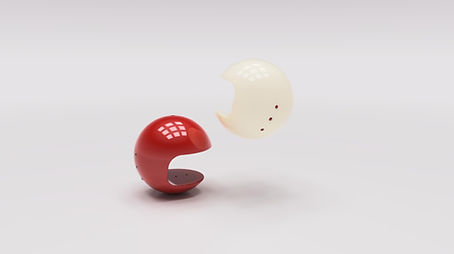
Imagine a safe ride on an e-scooter without any wearable devices.
E-scooters have become a popular trend among the younger generation as a means of transportation. However, when mixed with cars, scooters, buses, pedestrians, and bicycles, the road can become dangerous. Many riders also prefer not to wear protective gear, such as helmets—or even the latest wearable safety devices, like airbag necklaces—to protect their heads in case of an accident.
So, what can we do? Cars have airbags to prevent head injuries. What if e-scooters had something similar? This idea was first inspired by Honda’s Smartphone Case N.



Sensor Fusion – combining accelerometer, gyroscope, barometer, and GPS data to recognize falls and impacts with high accuracy.
AI Visual Detection – camera and simple onboard AI to confirm unusual movement patterns.
Real-time Monitoring – constant tracking of speed, altitude, and body orientation.
Automatic Deployment – a microcontroller activates the inflator within milliseconds.Emergency Response – location data is sent to connected devices or services.
Our system is a wearable inflatable safety bubble that automatically protects you during dangerous falls or collisions. It combines GPS, IMU (motion sensors), barometer, and camera AI to detect abnormal movements like free-fall, sudden impact, or being thrown.When an accident is confirmed, the system instantly triggers a mini inflator that deploys a protective bubble around the body. This bubble provides 360° impact absorption and reduces injury risk.



In this project, the playful concept takes priority over practical design. I used my imagination to explore a 'what if' scenario— designing a nearly impossible piece of future technology, while still explaining its theory and how it could work. Personally, I think this idea might seem unrealistic now, but maybe one day it could become real. The main purpose of this project is to ask: if people refuse to wear helmets or protective gear, what can we do to protect as many of them as possible?